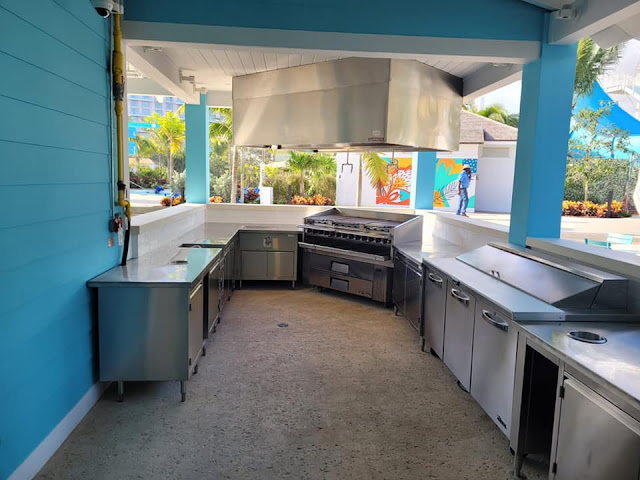Designing a Safe and Sanitary Commercial Kitchen: Best Practices
They say cleanliness
is next to godliness, and nowhere is this truer than in commercial kitchens. The
top concern for running a restaurant or food service establishment is ensuring
your kitchen's safety and sanitation. To achieve this, it's crucial to
implement best practices when designing your kitchen space.
This article will
guide you through the key elements of a commercial kitchen design. From
optimizing the layout and flow to selecting the right equipment and ensuring
proper ventilation, we'll cover all the bases. We'll also delve into regular
cleaning and sanitization protocols, employee training, and hygiene practices.
Layout and Flow Optimization
When designing your
kitchen, it's important to prioritize ergonomics and space utilization.
By considering your
staff's movement and equipment placement, you can create an efficient and safe working
environment. Start by organizing your kitchen into distinct work zones based on
the tasks performed. This will help streamline operations and reduce
unnecessary steps.
Additionally,
ensure that each station is equipped with the necessary tools and supplies
within arm's reach, eliminating the need to search for items constantly. You
can seek guidance from restaurant equipment suppliers to choose the
ideal tools for your kitchen.
Equipment Selection and Placement
After identifying the optimal arrangement, selecting
suitable equipment and strategically positioning it becomes essential.
To reduce downtime from repairs or maintenance, put durability and ease
of cleaning first when choosing equipment.
Additionally, seek the help of a commercial kitchen design
professional on how to best utilize the space when deciding where to place each
piece of equipment.
Proper Ventilation and Air Quality Control
Proper ventilation
and air quality control are essential for creating a comfortable and healthy
environment in your kitchen. This ensures that your staff can work efficiently
without the risk of respiratory issues or unpleasant odors.
To avoid unpleasant
odors, spend on a high-quality air filtration system to keep your kitchen clear.
This system effectively removes contaminants and airborne particles from the
kitchen area, eliminating potential health hazards associated with poor indoor
air quality.
Regular Cleaning and Sanitization Protocols
A consistent
cleaning schedule prevents bacteria buildup and ensures food safety.
Here are three
effective disinfection methods to incorporate into your cleaning routine:
- Hot
water and soap: You must wash all surfaces and utensils with hot, soapy water at
the end of the day before you close. It will help remove dirt, grease, and
most bacteria.
- Sanitizing
solution: Prepare a sanitizing solution by mixing chlorine bleach or other
approved sanitizers with water according to manufacturer instructions. Use
this solution to wipe down countertops, cutting boards, and other
high-touch areas.
- Steam
cleaning: Invest in steam cleaning equipment to kill germs on hard-to-reach
surfaces such as grout lines or oven interiors.
By implementing
these cleaning practices and disinfection methods into your regular routine,
you can create a safe and sanitary commercial kitchen environment for your
staff and customers.
Employee Training and Hygiene Practices
Maintaining a
healthy and clean environment requires training your employees on proper
hygiene practices, specifically emphasizing regular handwashing.
Additionally, ensure
they understand the significance of following proper food handling procedures.
This includes avoiding cross-contamination by using separate cutting boards for
raw meats and other foods, properly storing perishable items at appropriate
temperatures, and regularly sanitizing work surfaces.
Conclusion
The success of your
business depends on designing a safe and sanitary commercial kitchen. Seamless
collaboration among all kitchen components is essential for maintaining the
highest cleanliness and food safety standards.
You can take the
help of reputed restaurant equipment suppliers in Florida, like the Uni
Source Supply to create a kitchen that runs smoothly like a finely tuned
orchestra by implementing proper layout optimization, selecting the right
equipment, and ensuring proper ventilation and air quality control.



Comments
Post a Comment